Dagstuhl Seminar 17271
Foundations of Wireless Networking
( Jul 02 – Jul 07, 2017 )
Permalink
Organizers
- Christina Fragouli (University of California at Los Angeles, US)
- Magnús M. Halldórsson (Reykjavik University, IS)
- Kyle Jamieson (Princeton University, US & University College London, GB)
- Bhaskar Krishnamachari (USC - Los Angeles, US)
Contact
- Annette Beyer (for administrative matters)
Wireless communication has grown by leaps and bounds in recent decades, with huge social and societal impact. This is nowhere near saturation, especially with the ongoing emergence of the Internet of Things. Underlying this technology are fundamental questions: what is the capacity of wireless networks, what are methods to achieve it, how to efficiently configure and adapt communication links, organize access to the medium, overcome interference, and disseminate information.
Different schools of thought have arisen to tackle these fundamental questions. These come from different backgrounds, involving different types of mathematical and practical tools and different approaches and outlooks. The goals of this Dagstuhl Seminar are twofold: first, to bring together top researchers from these different research communities to review and discuss models and methods in order to obtain a better understanding of the capabilities and limitations of modern wireless networks. Second, to formulate more realistic models, new algorithm and protocol design approaches, and new system ideas for future wireless networks that may be subsequently investigated in joint research projects.
One source of bifurcation within the various theory camps is whether to model the environment as a stochastic process with known or unknown parameters (typical in the EE information theory and network control/optimization theory communities) or as a worst-case adversary (typical in the CS theory community). These perspectives sometimes yield very similar algorithms but different guarantees.
Another challenging topic where multiple viewpoints are evident is the lack of constancy, or the frequent changes in reception conditions. One particular type of time-varying interference is due to other networks, typically under separate control. These changes and interferences can be treated or modeled in different ways. In particular, they can be viewed either as stochastic, oblivious, or adversarial. This is an area that could particularly benefit from cross-discipline discussions.
A completely different way of dealing with interference is to co-opt it. Sophisticated schemes have been developed to exploit interference from simultaneously transmitting relays to significantly increase throughput and reliability, including interference alignment, quantize-map-forward relaying, distributed MIMO, beamforming and interference cancellation. All these techniques call for very different approaches to fundamental dissemination problems. The practical implementability in the context of large-scale distributed systems of many of these schemes is still unclear. We hope that the conversations in this seminar will drive collaborations around new kinds of practical measurements and experiments (e.g., new implementations of physical- and link-layer approaches).
An important part of the seminar is to actively promote a dialog between different communities. As a result, we seek researchers that are by nature open to different perspectives and have enough self-confidence to welcome research of a different nature. The objective is for each participant to consciously reflect on and articulate the implicit values, identity, shared understandings and skill set that people in his/her community expect.
 Christina Fragouli, Magnus M. Halldorsson, Kyle Jamieson, and Bhaskar Krishnamachari
Christina Fragouli, Magnus M. Halldorsson, Kyle Jamieson, and Bhaskar Krishnamachari
Wireless communication has grown by leaps and bounds in recent decades, with huge social and societal impact. This is nowhere near saturation, especially with the coming Internet-of-Things on the horizon.
Underlying this technology are fundamental questions: how to efficiently configure and adapt communication links, organize access to the medium, overcome interference, and disseminate information. Unfortunately, the wireless medium is tricky, and the modeling of signal propagation and interference has proved to be highly involved, with additional challenges introduced by issues such as mobility, energy limitations, and device heterogeneity. New technologies such as cooperative MIMO, directional antennas, interference alignment, network coding, energy harvesting and motion control add another layer of complexity, and are yet to be well-understood. Deriving good algorithms and protocols is therefore a non-trivial task.
Communities
Different schools of thought have arisen to tackle these fundamental questions. These come from different backgrounds, involving different types of mathematical tools and different approaches and outlooks. It is not just a theory vs. practice split, but also splits within the theory and the practice camps. In addition to the more established information theory, there has been quite some work on network control theory, and also a budding algorithmic theory; on top of physical-layer hardware experimentation, we see also networking systems research and simulation studies.
We identified the following communities, which are not all exclusive:
Information Theory Characterized by an interest in fundamental information-theoretic capacity bounds; novel communication paradigms such as MIMO, network coding, interference cancellation, interference alignment; estimation and detection under known stochastic models of noise.
Algorithm Theory Characterized by a focus on algorithms, their complexity and effectiveness, with emphasis on rigorous proofs and typically worst-case analysis.
Prime publication venues: PODC, DISC, STOC, SODA, ICALP (Track C)
Experimental Mobile and Wireless Systems Characterized by the design, implementation, and evaluation of practical wireless systems in real testbeds and real-world applications that both both evaluate the efficacy of previously-known techniques and their combinations "in the wild" and add design insight by developing novel heuristic algorithms and architectures that are shown to perform well in practice.
Prime publication venues: MobiCom, MobiHoc, SIGCOMM, NSDI, SenSys, IPSN, BuildSys, MobiSys.
Physical Layer and Hardware Design Characterized by the design, implementation, and evaluation of new hardware, signal processing techniques. The theoretical members of this community have a lot of overlap with information theory, while the more experimental members of this community have a lot of overlap with the experimental wireless and mobile systems community in terms of the problems they consider and their solution approaches.
Prime publication venues: IEEE Trans. on Wireless, IEEE Trans. on Comms., IEEE Globecom, IEEE Vehicular Technology Conf.
Goals of the Seminar
The goal of this Dagstuhl seminar is to bring together top researchers from the different wireless research communities to review and discuss models and methods in order to obtain a better understanding of the capabilities and limitations of modern wireless networks, and to come up with more realistic models and new algorithm and protocol design approaches for future wireless networks that may then be investigated in joint research projects.
An important part of the workshop is to actively promote a dialog between different communities. As a result, we seek researchers that are by nature open to different perspectives and have enough self-confidence to welcome research of a different nature. The objective was for each participant to consciously reflect on the implicit values, identity, shared understandings and skill set that people in his/her community expect, and to articulate these issues to others in order to identify and appreciate commonalities and differences, and the potential gains from forming new bridges.
Seminar Operation
The seminar had varied forms of activities during its operation. As people came from different communities, a major objective was to get to know each other.
"Speak-and-spark" presentations All the participants gave a brief, 5-10 minute pitch talk on a problem that they have been (or would to be) working on. Most of these were given on the first day, which provided a way of introducing one another, as well as a way to spark discussions that could be continued in private, in small groups, or in plenum.
Survey presentations Seven senior researchers were asked to give a one-hour survey talk on a topic of current interest. These were spread over the days excluding the first.
Breakout sessions Several topical issues were identified as particularly suitable for group discussions. The participants voted on the topics of their interest, after which three were selected. The groups were chosen so as to feature representatives from the different communities. Two such rounds of breakout sessions were organized on Tuesday. The discussions were summarized by the group leaders (often with the help of the scribes) for the whole audience on Wednesday morning, followed by discussions.
"Important paper" pitches The participants were encouraged to identify research paper(s) that open "new" research areas and/or pose questions in their community. This was also a means to articulating what researchers in that subfield found essential or influential. These were the presented in 5-10 minutes, followed by open questions.
Plenary discussions Part of the last day's morning was allocated to general discussions around the themes posed during the seminar, with the aim of identifying future problem directions and research areas.
Abstracts and summaries of these talks and discussions are given in the following sections.
 Christina Fragouli, Magnús M. Halldórsson, Kyle Jamieson, and Bhaskar Krishnamachari
Christina Fragouli, Magnús M. Halldórsson, Kyle Jamieson, and Bhaskar Krishnamachari
- Giuseppe Caire (TU Berlin, DE) [dblp]
- Izzat Darwazeh (University College London, GB) [dblp]
- Michelle Effros (CalTech - Pasadena, US) [dblp]
- Anja Feldmann (TU Berlin, DE) [dblp]
- Christina Fragouli (University of California at Los Angeles, US) [dblp]
- Seth Gilbert (National University of Singapore, SG) [dblp]
- Deniz Gündüz (Imperial College London, GB) [dblp]
- Martin Haenggi (University of Notre Dame, US) [dblp]
- Magnús M. Halldórsson (Reykjavik University, IS) [dblp]
- Longbo Huang (Tsinghua University - Beijing, CN) [dblp]
- Kyle Jamieson (Princeton University, US & University College London, GB) [dblp]
- Tomasz Jurdzinski (University of Wroclaw, PL) [dblp]
- Holger Karl (Universität Paderborn, DE) [dblp]
- Christina Kolb (Universität Paderborn, DE) [dblp]
- Bhaskar Krishnamachari (USC - Los Angeles, US) [dblp]
- Fabian Daniel Kuhn (Universität Freiburg, DE) [dblp]
- Muriel Médard (MIT - Cambridge, US) [dblp]
- Konstantinos Nikitopoulos (University of Surrey, GB) [dblp]
- Christian Scheideler (Universität Paderborn, DE) [dblp]
- Christian Schindelhauer (Universität Freiburg, DE) [dblp]
- Emina Soljanin (Rutgers University - Piscataway, US) [dblp]
- Vijay Subramanian (University of Michigan - Ann Arbor, US) [dblp]
- Patrick Thiran (EPFL - Lausanne, CH) [dblp]
- Tigran Tonoyan (Reykjavik University, IS) [dblp]
- Daniela Tuninetti (University of Illinois - Chicago, US) [dblp]
- Elif Uysal (Middle East Technical University - Ankara, TR) [dblp]
- Zhiying Wang (University of California - Irvine, US) [dblp]
- Roger Wattenhofer (ETH Zürich, CH) [dblp]
- Jörg Widmer (IMDEA Networks - Madrid, ES) [dblp]
- Dongxiao Yu (Huazhong University of Science & Technology, CN) [dblp]
- Michele Zorzi (University of Padova, IT) [dblp]
- Marco Antonio Zúñiga Zamalloa (TU Delft, NL) [dblp]
Classification
- hardware
- mobile computing
- networks
Keywords
- wireless networks

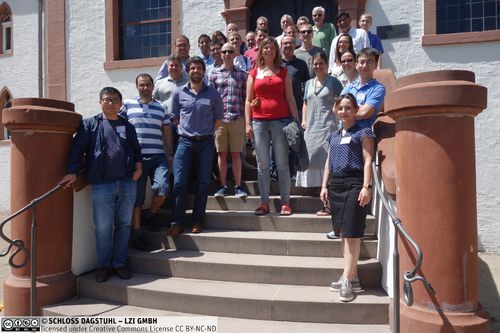
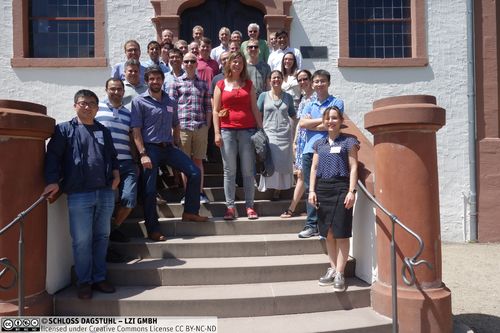
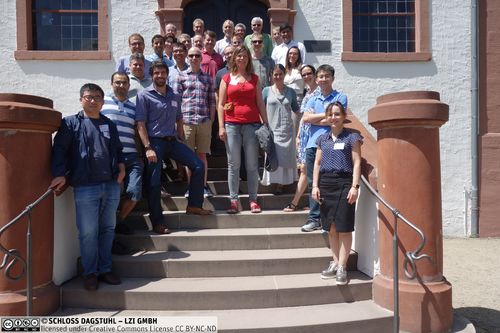
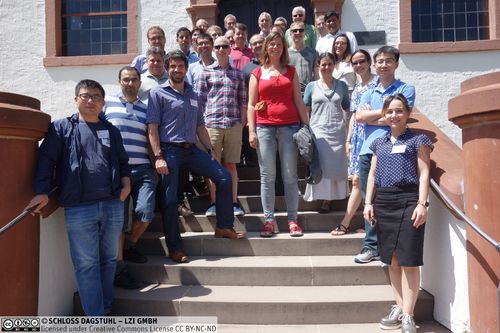
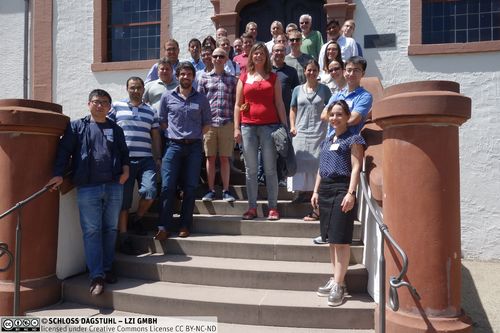
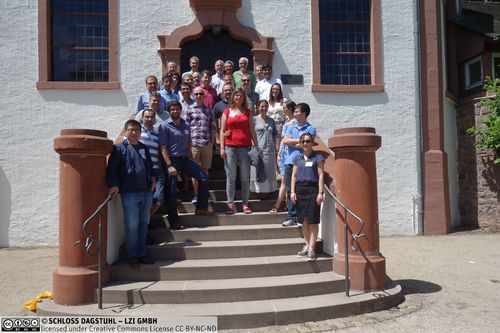
 Creative Commons BY 3.0 DE
Creative Commons BY 3.0 DE
